Updated Feb 2024
In 2013, I (Beth) did the lion encounter. Now, adding a note to this article in 2024, please be aware that this activity is not the same as it was then. Although I loved being so close to young lions, and the lions were very well-treated (this was not a canned hunting facility), I support the discontinuation of lion walks, because the level of human contact is neither sustainable nor fair on the animals. I am very happy to enjoy the new format of the lion activity, as this is the more ethical pattern to follow going forward.
Here is the 2013 article…
In Victoria Falls we were given the chance to walk with young lions in the African bush, which we booked with Wild Horizons. The experience is run by Lion Encounter, a partner of Lion ALERT, an ambitious programme which aims to increase Africa’s dwindling wild lion population.
Ethical note: It is imperative that you fully research all animal experiences to ensure that the animals are not being exploited. The lions here are not bred for canned hunting, unlike those in other locations in South Africa. The lions are part of a conservation program where they are eventually released into the wild to have their own wild cubs. The lion programme has strict rules about the stage at which lions can be involved with humans.Make an informed decision before promoting or supporting any animal interaction. More information can be found in the details of this post.
The experience
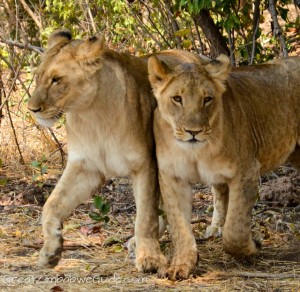 Lion Encounter in Victoria Falls is situated on the lovely Masuwe Estate, about a 10-minute shuttle ride from Victoria Falls town. First, we were given a full overview of the ALERT Four-Step Programme (see details at the bottom of this post), as well as some safety guidelines.
Lion Encounter in Victoria Falls is situated on the lovely Masuwe Estate, about a 10-minute shuttle ride from Victoria Falls town. First, we were given a full overview of the ALERT Four-Step Programme (see details at the bottom of this post), as well as some safety guidelines.
Our leader explained that we should never turn our backs to the lions, put our hands near their faces or walk in front of them; and that during the walk we should always stay behind them. When the lions rested, we could kneel behind them, but we should always be ready to stand up if they get too curious.
An intern on placement at the estate was translating the leader’s instructions into Spanish as he spoke, as there was a group of Spanish tourists with us, but she ended up talking more than he did so I suspect she was adding information here and there. For me, this was overly time-consuming for both parties, and it would’ve been better if we’d been split into a Spanish group and an English group so that the instructions could’ve been given simultaneously. We then watched a short info DVD and were given a wooden stick each, to use as a distraction technique if the lions got too close.
We were taken into a clearing where two young lions were resting under a tree. They were much bigger than I’d expected – taller than an adult Great Dane; very stocky and muscular beneath their golden fur. They must’ve been at least fifteen months old. It was daunting to think that the cubs wouldn’t be fully grown for another two years at least – imagine how much more powerful they’d be by then! The lions were completely beautiful … I think the photos speak for themselves …
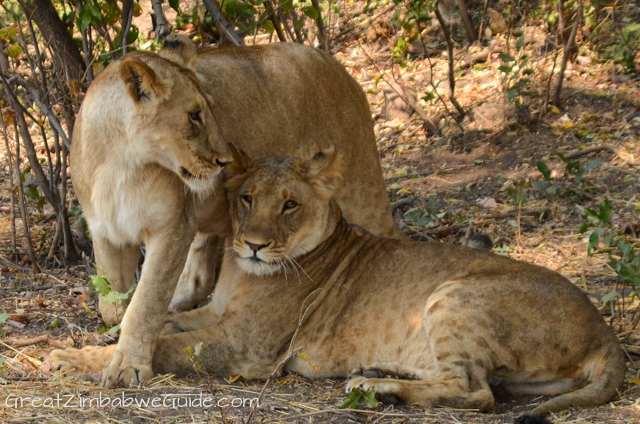
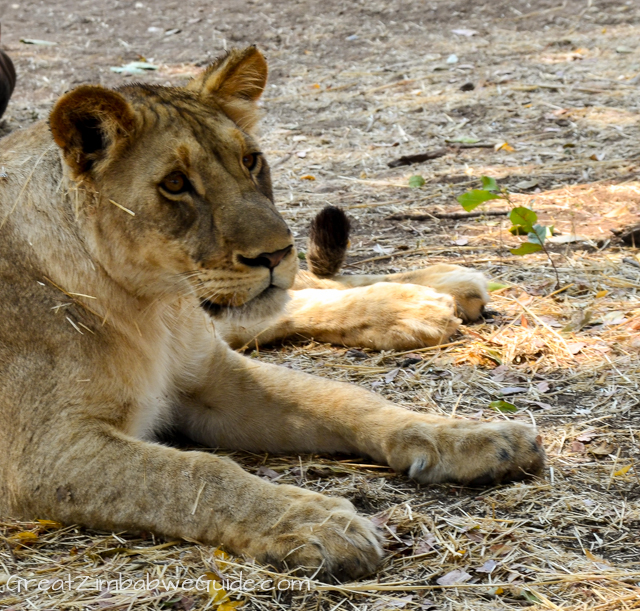
As the cubs were resting (which lions often do), we were invited to touch them. I walked around the back of them, giving them a wide at their sharp ends, and carefully avoiding those tails – the last thing I wanted was to tread on one of them. As I knelt down, one of the cubs flicked its tail and slapped my leg. The tail was wet and muddy – they’d obviously been playing in the river that morning. Their fur felt very rough – much rougher than Sylvester’s, and now that I was up close, I marvelled again that these huge animals were still just cubs. They yawned a lot which showed off their impressive big teeth.

There were 10 tourists in our group who each had their turn with the cubs, giving their camera to a member of staff who happily snapped away. One of the scouts climbed a nearby tree and wiggled the branches so that the lions looked up in curiosity – I’m not sure if the branch-shaking exercise was for the lions to learn about the environment, to distract them from getting impatient with all the people around, or so that they looked good in the photos. In any case, it was a funny sight, seeing a grown man frantically shaking a tree branch in front of the lions, as if he was dangling a piece of yarn in front of a kitten.

The walk itself took about half an hour, during which the two cubs walked along the bush path, with us following in a line. In turns, we went to the front of the line to touch the lions’ backs as they walked, and again, staff members took photos as we did so. Although photos are important, at times I felt more like a model in a photo shoot rather than someone having a genuine interaction with a lion. It must be difficult for a place like this to strike a good balance, though, as I’m sure the reason they take so many photos is because the tourists have requested it. The cubs weren’t very energetic, but very alert to everything that was happening around them.
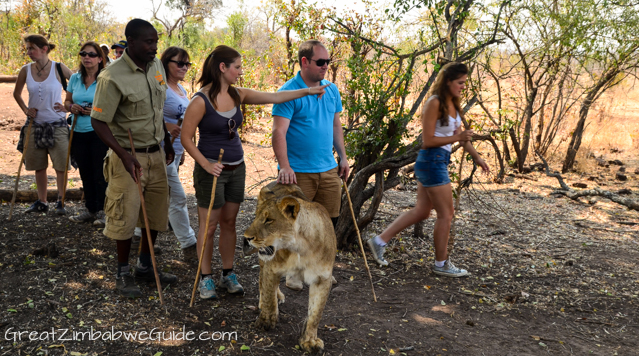
I felt reasonably secure during the walk – as secure as one can feel in the presence of a dangerous animal – because there were at least 6 scouts accompanying us on the walk and they kept an eye on everything the lions did, and ensured we stuck to the rules.
The chance to get this close to a lion is very rare, and I appreciated being able to get one-to-one with the King of the Beasts. In my opinion, though, the rush that I get seeing a pride of lions in the wild is far more exciting and rewarding than walking with two cubs, nine other tourists and six scouts. What’s important to remember is that the whole point of the encounter is to raise funds for the programme itself – a programme that aims to introduce more lions to the wild and give future generations the opportunity to see the real thing, rather than a mediated experience like this.
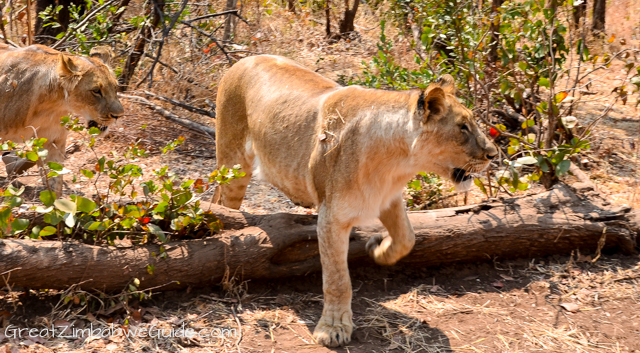
More practical details about the Lion Encounter can be found on their website here. I booked this activity through Wild Horizons.
The principle of the Lion ALERT programme
Lion populations in Africa have decreased by 48% in the past 20 years. Some reports say that half of all wild lions could become extinct within 40 years. The main causes of this, according to the Born Free Foundation, are “retaliatory killings resulting from human-lion conflict, habitat and prey loss, disease, and unsustainable off-take for international trade in lion and lion parts [e.g. trophy hunting]”.
Lion ALERT has created a Four-Step Programme to breed and release disease-free prides of lions into wild, protected conservation areas. Their premise is that existing lion conservation efforts have had mixed results, are over-reliant on donor funding, and that lion populations are so low that the time has come to try a new method. Here’s the breakdown of each stage:
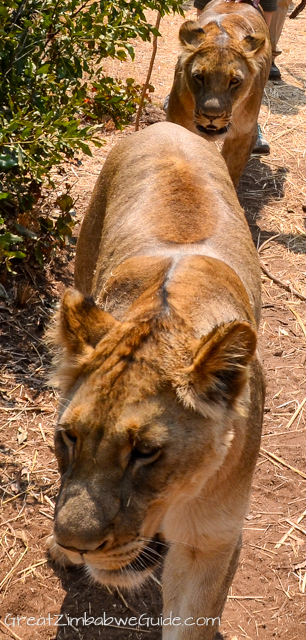 Stage 1: Lion cubs are born in captivity in a safe environment and fed by their mother for 3 weeks. They’re then raised by a human carer who feeds the cubs and assumes the role of the mother. The human “mother” takes the sibling cubs for daily walks in the bush so that the cubs’ natural instincts develop, as they would in the wild. The cubs are not trained, and tourists are not allowed to hold or cuddle the cubs.
Stage 1: Lion cubs are born in captivity in a safe environment and fed by their mother for 3 weeks. They’re then raised by a human carer who feeds the cubs and assumes the role of the mother. The human “mother” takes the sibling cubs for daily walks in the bush so that the cubs’ natural instincts develop, as they would in the wild. The cubs are not trained, and tourists are not allowed to hold or cuddle the cubs.
When the cubs are between 6 and 18 months old, tourists are allowed to accompany them on some of the bush walks. The lions perceive the new humans as dominant members of the pride. These walks raise awareness of the lions’ plight, and generate funding for the later stages of the programme, like land acquisition, veterinary bills and running costs.
As the cubs grow up with repeated exposure to their natural habitat, their hunting instincts start to develop. They start making small kills from 12 to 15 months of age. When the cubs are about 18 months old, they are taken on night hunting encounters where they can learn to hunt for larger game in groups in the dark, as they would in the wild.
Stage 2: The lions are released into a small managed wildlife area, which is bought using funds raised by the programme. Here the pride of young lions hunt together and are self-sustaining, mirroring the behaviour of a wild pride. To date, this has been largely successful in the programme. When necessary, additional lions are introduced to the pride, in the hope that they will successfully bond and form a bigger pride containing both males and females.
Stage 3: The self-sustaining pride of lions are released into a bigger managed wildlife area, an important difference is that the new area contains competitive species such as hyena. Again, funding is required to secure such land.
The lions will have cubs of their own which will be raised in a natural pride, near-wild environment without any human contact. It is these cubs that will later be released into the wild. The cubs will learn natural human avoidance behaviours necessary for release into an unfenced wilderness area. My understanding is that the parent lions will remain in Stage 3.
Stage 4: Working carefully with governments and conservation groups across Africa, ALERT will release the disease-free cubs that were born in Stage Three into a wild conservation area. The young new pride will improve the gene pool of the new area and reproduce to increase lion population numbers.
The programme operates in Gweru (Antelope Park, Zimbabwe), Livingstone (Zambia) and Victoria Falls (Zimbabwe).
How successful is the programme in releasing wild lions?
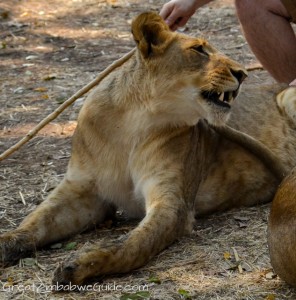 One of the big concerns from commentators is that there will be a large number of lions who remain in Stage Three, unable to be released to the true wild due to their habituation to humans, and that they will eventually be used for canned trophy hunting. However, Antelope Park has publicly refuted the latter in a statement that says: “No lion from Antelope Park has ever been, and never will be, intentionally sold for canned hunting. African Encounter is completely against canned hunting.”
One of the big concerns from commentators is that there will be a large number of lions who remain in Stage Three, unable to be released to the true wild due to their habituation to humans, and that they will eventually be used for canned trophy hunting. However, Antelope Park has publicly refuted the latter in a statement that says: “No lion from Antelope Park has ever been, and never will be, intentionally sold for canned hunting. African Encounter is completely against canned hunting.”
The programme is ambitious and pioneering and as such, it has not yet been fully tested. It requires a lot of funding to secure the land necessary to implement it properly. The funding comes mainly from tourists and volunteers, which relies on absolute safety. Lions – even cubs – can be extremely dangerous, and the programme can’t afford to have any serious injuries.
The jury’s still out on this one – only time will tell whether the number of lions successfully released in the wild will outnumber those left in Stage Three. The initial pride is waiting to be released into Stage Three, so we have to wait a few years to see what happens to them, and whether their cubs will go on to successfully live in the wild.
This post is proudly sponsored by Wild Horizons. Sponsored posts are written with the understanding that the writer can express her opinions honestly and openly.
Wild Horizons is a ‘one-stop’ ground handling & activity provider based in Victoria Falls, Livingstone and Chobe. Wild Horizons offers a range of tours, transfers and activities including Rafting, Canoeing, Elephant Back Safaris, High Wire Activities, Lion Encounters, Helicopter Flips & our lodges: Imbabala Zambezi Safari Lodge and The Elephant Camp.
Part of the Classic Zimbabwe holiday 2013 series. Read the next post where we swing above the trees: Our Canopy Tour
If you’re planning your own Zimbabwe holiday (hooray!), I can recommend Go2Africa, Africa’s Leading Safari Company (and one of our affiliates). Go2Africa has been tailor-making safari vacations for thousands of clients from across the globe since 1998. You can research African destinations, accommodation, safaris, and more. Even better, you can directly contact their safari specialists who can help you get the African experience that’s perfect for you.
Please do visit the Go2Africa website for more.
You can also check out Go2Africa’s Zimbabwe tours here.













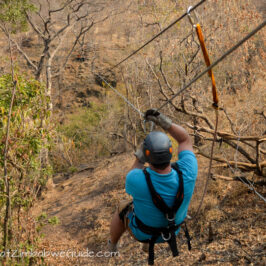
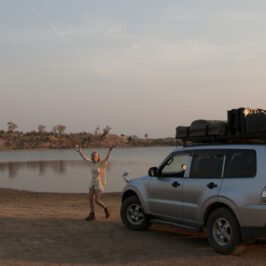



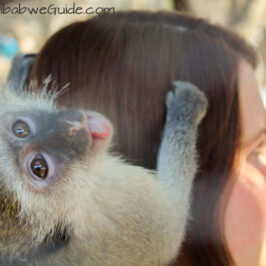

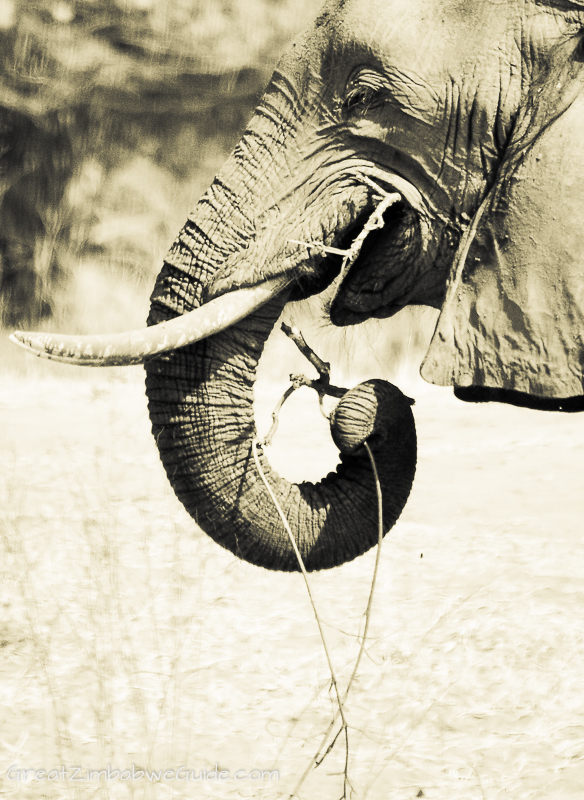
Leave a Reply